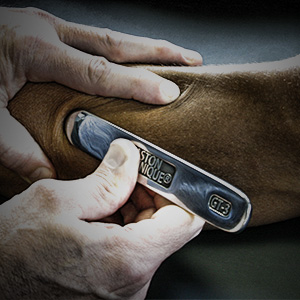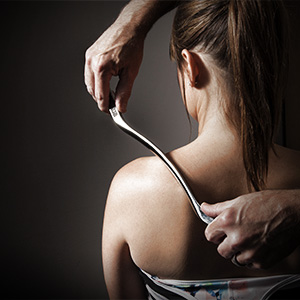Graston Technique
Soft tissue injuries can be debilitating and frustrating. Graston Technique (GT) therapy is successful in effectively treating all soft tissue conditions, whether they are chronic, acute or post- surgical. GT therapy can help you enjoy life again.
Our unique technique and instruments enable the treatment of scar tissue and fascial restrictions during rehabilitation that allows for faster rehabilitation and with greater success when the goal is restoring range of motion, eliminating pain, and restoring normal function.


Myofascial Work
Myofascial therapy targets the muscle and fascial systems, promotes flexibility and mobility of the body's connective tissues. It is said to mobilize adhesions and reduce severity/sensitivity of scarring and to be useful for treating skeletal muscle immobility and pain by relaxing contracted muscles, improving blood and lymphatic circulation, and stimulating the stretch reflex in muscles.
Fascia is a thin, tough, elastic type of connective tissue that wraps most structures within the human body, including muscle. Fascia supports and protects these structures. Osteopathic practice holds that this soft tissue can become restricted due to psychogenic disease, overuse, trauma, infectious agents, or inactivity, often resulting in pain, muscle tension, and corresponding diminished blood flow.
Myofascial Trigger Points
A successful treatment protocol relies on identifying trigger points, resolving them and, if all trigger points have been deactivated, elongating the structures affected along their natural range of motion and length. In the case of muscles, which is where most treatment occurs, this involves stretching the muscle using combinations of passive, active, active isolated (AIS), muscle energy techniques (MET), and proprioceptive neuromuscular facilitation (PNF) stretching to be effective. Fascia surrounding muscles should also be treated to elongate and resolve strain patterns, otherwise muscles will simply be returned to positions where trigger points are likely to re-develop.[citation needed]
The results of manual therapy are related to the skill level of the therapist. If trigger points are pressed too short a time, they may activate or remain active; if pressed too long or hard, they may be irritated or the muscle may be bruised, resulting in pain in the area treated. This bruising may last for a 1–3 days after treatment, and may feel like, but is not similar to, delayed onset muscle soreness (DOMS)[citation needed], the pain felt days after overexerting muscles. Pain is also common after a massage if the practitioner uses pressure on unnoticed latent or active trigger points, or is not skilled in myofascial trigger point therapy.
Joint Mobilization
Joint mobilization is a manual therapy intervention, a type of straight-lined, passive movement of a skeletal joint that addresses arthrokinematic joint motion (joint gliding) rather than osteokinematic joint motion. It is usually aimed at a 'target' synovial joint with the aim of achieving a therapeutic effect. These techniques are used by a variety of health care professionals with specific training in manual therapy assessment and treatment techniques.
Joint mobilization is classified into five 'grades' of motion:
-
Grade I - Low amplitude, rhythmically oscillating joint glide near the resting position of the
available arthrokinematic joint play. Activates Type I mechanoreceptors that inhibit nociception
and provide information regarding joint position. They have a low threshold and respond to a few
grams of tension.
Activates mechanoreceptors in the superficial layer of the joint capsule - Bulbous corpuscles. -
Grade II - Relatively large amplitude, rhythmically oscillating joint glide that carries well
into the available arthrokinematic joint play. Activates Type II mechanoreceptors that inhibit
nociception and provide information about joint acceleration. They also have a low threshold and
respond to a few grams of tension.
Activates mechanoreceptors in the deep layer of the joint capsule - Pacinian Corpuscles. -
Grade III - Relatively large amplitude, rhythmically oscillating joint glide that carries to the
end of the available arthrokinematic joint play.
Designed to physically stretch the joint capsule. -
Grade IV - Low amplitude, rhythmically oscillating joint glide that is performed at the end of
the available arthrokinematic joint play.
Designed to physically stretch the joint capsule.



